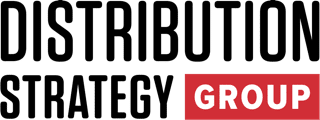Manufacturing activity across the United States remained very much a mixed bag in August, with the words “uncertainty” and “tariffs” appearing repeatedly in comments by industry executives.
The Manufacturing Purchasing Managers Index of the Institute of Supply Management came in at 48.0 in August, up from 48.7 in July, but the sixth consecutive month of industry contraction.
“We continue to have weak demand overall, still due to tariff uncertainty,” Susan Spence, chair of the ISM’s Manufacturing Business Survey Committee, told reporters after the release of the report Tuesday. “Sixty-nine percent of manufacturing GDP is in contraction. It’s down slightly from July. We have 4% of those industries in a heavy contraction period, and that is also down, but it is still not good to have that much in contraction.”
In a separate report today, the ISM services PMI registered 52.0% in August, up from the July figure of 50.1%, representing the third month in a row of expansion. Among the 18 industries surveyed, Wholesale Trade grew the second fastest, after the high-tech Information industry. Wholesalers also led the way in new order growth, an indication of inventory buildup ahead of the holiday season.
One bright spot in the Manufacturing PMI report, a crucial indicator for distributors of the health of the nation’s factories, was an uptick in the new orders index to 51.4% in August. That was notably higher than the 47.1% reading in July and was the first increase after six months of contraction. Of the six largest manufacturing sectors, orders increased in two: Food, Beverage & Tobacco Products; and Computer & Electronic Products.
Still, there were caveats. “Despite the index’s move into expansion territory, for every positive comment about new orders, there were 2.5 comments expressing concern about near-term demand, primarily driven by tariff costs and uncertainty,” Spence said.
Anxiety about tariffs cloud the outlook
Comments from executives responding to the ISM manufacturing survey reflected widespread anxiety about the business climate and tariffs. Here are some examples provided by the ISM, with the quoted executive’s industry in parentheses:
- “Orders across most product lines have decreased. Financial expectations for the rest of 2025 have been reduced. Too much uncertainty for us and our customers regarding tariffs and the U.S./global economy.” (Chemical Products)
- “Tariffs continue to be unstable, with suppliers adding surcharges ranging between 2.6 percent to 50 percent.” (Petroleum & Coal Products)
- “Tariffs continue to wreak havoc on planning/scheduling activities. New product development costs continue to increase as unexpected tariff increases are announced — for example, 50-percent duties on imports from India, and increases to all countries up from original 10 percent. Our materials/supplies are now rising in price, so our sell pricing is again being reviewed to ensure we keep a sustainable margin. Plans to bring production back into U.S. are impacted by higher material costs, making it more difficult to justify the return.” (Computer & Electronic Products)
- “The construction industry, especially home building, is still at a lower level. With new construction at a low level, our new sales are impacted. We are mainly now relying on replacement business. Cost of goods sold is higher due to tariff-impacted goods.” (Machinery)
Tariffs also loomed large in comments from executives who responded to the ISM’s services survey:
- “It’s all about country-specific tariff management. All decision making is currently dominated by tariff considerations.” [Retail Trade]
- “We are starting to see the impact of tariffs on the cost of imported goods. For our company, this is primarily for goods from Asia and South America. We expect to see the full effect of tariffs in our cost of goods sold by October.” [Accommodation & Food Services]
- “Tariffs continue to loom, and providers are starting to include references to tariffs when requesting price increases.” [Finance & Insurance]
- “While our overall spending approach is to remain cautious while waiting out the effects of the new tariff policies on commodity pricing, we expect fiscal year 2026 to be positive.” [Management of Companies & Support Services]
- “Locally, prices have and are continuing to rise on goods and services that do not appear to be directly impacted by tariffs.” [Public Administration]
- “Our company had the strongest quarter in its history since it became a public company in 2020. Revenue is increasing due to M&A activity and in spite of a slow housing market and increasing tariffs.” [Real Estate, Rental & Leasing]
- “Business overall is tightening. Most customers are extremely price conscious.” [Transportation & Warehousing].

